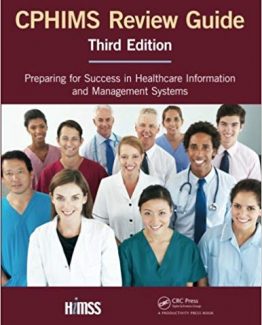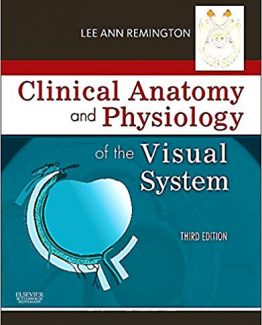Beginning Behavioral Research: A Conceptual Primer 7th Edition by Ralph Rosnow, ISBN-13: 978-0205810314
[PDF eBook eTextbook]
- Publisher: Pearson; 7th edition (March 2, 2012)
- Language: English
- 408 pages
- ISBN-10: 0205810314
- ISBN-13: 978-0205810314
Continuing the Chain of Discovery and Understanding Beginning Behavioral Research introduces students to the broad base and conceptual underpinnings of basic principles of ethical research with human participants from (a) the development of ideas and testable hypotheses, to (b) the selection of appropriate methods of measurement and data collection, to (c) the design and implementation of empirical research, to (d) the statistical analysis and interpretation of results, and finally, to (e) the reporting of findings and conclusions. The authors emphasize good research, empirical reasoning, and the continuity of psychological science in the continuing cycle of discovery and understanding. The beginning in the title of this text is intended to have a double meaning. It not only describes the level of the material but also conveys the idea of a journey. For some students, the journey will be completed at the end of the course in which this text is used. For others, the journey will have just begun. In either case, students will have a deeper understanding of the applicability and limits of the scientific method. They will also have learned how to frame questions about the scientific results they read or hear about in the media in ways that will allow them to reach beyond other people’s conclusions or assertions and decide for themselves what is true. Additional Learning Goals Upon completing this book, students who are expected to conduct a research study should be able to:
- Craft a research idea that can be empirically tested
- Choose methods of data collection and measurement
- Develop a research proposal
- Design and implement the research study
- Approach the research data
- Test and evaluate hypotheses and explore the results
- Report the research project in the APA style
Table of Contents:
Contents
Preface
Our Approach
New to This Edition
Supplements
Acknowledgments
About the Authors
PART I GETTING STARTED
Chapter 1 Behavioral Research and the Scientific Method
Preview Questions
Why Study Research Methods and Data Analysis?
What Alternatives Are There to the Scientific Method?
How Do Scientists Use Empirical Reasoning?
How Is Empirical Reasoning Used in Behavioral Research?
How Do Extraempirical Factors Come into Play?
What Does Behavioral Research Cover?
How Does Research Go From Descriptive to Relational to Experimental?
What Are the Characteristics of Good Researchers?
Summary of Ideas
Key Terms
Multiple-Choice Questions for Review (answers appear at the end of this chapter)
Discussion Questions for Review (answers appear at the end of this chapter)
Chapter 2 From Hunches to Testable Hypotheses
Preview Questions
What Is Meant by a Cycle of Discovery and Justification?
What Are Hypothesis-Generating Heuristics?
What Is the Potential Role of Serendipity?
How Can I Do a Literature Search?
How Should I Go About Defining Variables?
What Identifies “Good” Theories and Working Hypotheses?
What Is the Distinction between an Independent Variable and a Dependent Variable?
What Belongs in My Research Proposal?
Summary of Ideas
Key Terms
Multiple-Choice Questions for Review (answers appear at the end of this chapter)
Discussion Questions for Review (answers appear at the end of this chapter)
Chapter 3 Ethical Considerations and Guidelines
Preview Questions
How Do Ethical Guidelines in Research Function?
What Is Informed Consent, and When Is It Used?
How Are Ethics Reviews Done and Acted On?
What Are Obstacles to the Rendering of “Full Justice”?
How Can a “Relationship of Trust” Be Established?
How Do Scientific Quality and Ethical Quality Intertwine?
Is Deception in Research Ever Justified?
What Is the Purpose of Debriefing, and How Is It done?
How Is Animal Research Governed by Ethical Rules?
What Ethical Responsibilities Are There When Writing Up Research?
Summary of Ideas
Key Terms
Multiple-Choice Questions for Review
Discussion Questions for Review
PART II OBSERVATION AND MEASUREMENT
Chapter 4 Methods of Systematic Observation
Preview Questions
What Is Meant By Systematic Observation?
How Do Researchers Simultaneously Participate and Observe?
What Can Be Learned From Quantifying Observations?
How Are Judgment Studies Done?
How Does Content Analysis Work?
How Are Situations Simulated in Controlled Settings?
What Are Plausible Rival Hypotheses and the Third-Variable Problem?
What Is the Distinction Between Reactive and Nonreactive Observation?
Summary of Ideas
Key Terms
Multiple-Choice Questions for Review
Discussion Questions for Review
Chapter 5 Methods for Looking Within Ourselves
Preview Questions
What Are the Uses and Limitations of Self-Report Measures?
What Are Open-Ended and Fixed-Choice Items?
How Are Personality and Projective Tests Used?
What Is Meant By Measuring Implicit Attitudes?
What Are Numerical, Forced-Choice, and Graphic Ratings?
What Are Rating Errors, and How Are They Controlled?
What Is the Semantic Differential Method?
What Are Likert Scales and Thurstone Scales?
How Are Items Prepared for a Questionnaire or an Interview?
How Are Face-to-Face and Telephone Interviews Done?
How Are Behavioral Diaries Used in Research?
Summary of Ideas
Key Terms
Multiple-Choice Questions for Review
Discussion Questions for Review
Chapter 6 Reliability and Validity in Measurement and Research
Preview Questions
What Is the Difference Between Validity and Reliability?
What Are Random and Systematic Errors?
What Is the Purpose of Retest and Alternate-Form Reliability?
What Is Internal-Consistency Reliability, and How Is It Increased?
What Are Acceptable Test-Retest and Internal-Consistency Reliabilities?
How Is the Reliability of Judges Measured?
How Is Reliability Related to Replication and External Validity?
How Are Content and Criterion Validity Defined?
How Is Construct Validity Assessed in Test Development?
How Is Construct Validity Relevant to Experimental Design?
What Is the Importance of Statistical-Conclusion Validity and Internal Validity?
Summary of Ideas
Key Terms
Multiple-Choice Questions for Review
Discussion Questions for Review
PART III DESIGN AND IMPLEMENTATION
Chapter 7 Randomized Experiments and Causal Inference
Preview Questions
What Is the Purpose of Randomized Experiments?
How Is Random Assignment Accomplished?
What Are Between-Subjects Designs?
What Is the Formative Logic of Experimental Control?
What Are Within-Subjects Designs?
What Are Factorial Designs?
What Is Meant By Counterbalancing the Conditions?
Why Is Causality Said to Be “Shrouded in Mystery”?
How Do Scientists Logically Puzzle Out Efficient Causality?
What Conditions Pose a Threat to Internal Validity?
What Are Artifacts In Research?
Summary of Ideas
Key Terms
Multiple-Choice Questions for Review
Discussion Questions for Review
Chapter 8 Nonrandomized Research and Causal Reasoning
Preview Questions
How Is Causal Reasoning Attempted in the Absence of Randomization?
How Is the Third-Variable Problem Relevant?
What Is Meant By Subclassification on Propensity Scores?
What Are Time-Series Designs and “Found Experiments”?
What Within-Subjects Designs Are Used in Single-Case Experiments?
How Are Correlations Interpreted in Cross-Lagged Panel Designs?
What Is the Difference Between Longitudinal and Cross-Sectional Research?
Summary of Ideas
Key Terms
Multiple-Choice Questions for Review
Discussion Questions for Review
Chapter 9 Survey Research and Subject Recruitment
Preview Questions
What Are Opportunity and Probability Samples?
What Is Meant By Bias and Instability in Survey Research?
Why Do We Not Know “For Sure” the Bias in Sampling?
How Is Simple Random Sampling Done?
What Are Stratified Random Sampling and Area Probability Sampling?
What Did the Literary Digest Case Teach Pollsters?
What Are Point Estimates and Interval Estimates?
What Are the Benefits of Stratification?
How Is Nonresponse Bias Handled in Survey Research?
What Are the Typical Characteristics of Volunteer Subjects?
How Is Volunteer Bias in Opportunity Samples Managed?
Summary of Ideas
Key Terms
Multiple-Choice Questions for Review
Discussion Questions for Review
PART IV DESCRIBING DATA AND DRAWING INFERENCES
Chapter 10 Summarizing the Data
Preview Questions
How Is Visual Integrity Ensured When Results Are Graphed?
How Are Frequencies Displayed in Tables, Bar Graphs, and Line Graphs?
How Do Stem-and-Leaf Charts Work?
How Are Percentiles Used to Summarize Part of a Batch?
How Is an Exploratory Data Analysis Done?
How Does Asymmetry Affect Measures of Central Tendency?
How Do I Measure How “Spread Out” a Set of Scores Is?
What Are Descriptive and Inferential Measures?
How Do I Estimate a Confidence Interval Around a Population Mean?
What Is Distinctive About the Normal Distribution?
Why Are z Scores Called Standard Scores, and How Are They Used?
Summary of Ideas
Key Terms
Multiple-Choice Questions for Review
Discussion Questions for Review
Chapter 11 Correlating Variables
Preview Questions
What Are Different Forms of Correlations?
How Are Correlations Visualized in Scatter Plots?
How Is a Product-Moment Correlation Calculated?
How Is Dummy Coding Used in Correlation?
When Is the Phi Coefficient Used?
How Is a Correlation Calculated on Ranks?
Summary of Ideas
Key Terms
Multiple-Choice Questions for Review
Discussion Questions for Review
Chapter 12 Understanding p Values and Effect Size Indicators
Preview Questions
Why Is It Important to Focus Not Just On Statistical Significance?
What Is the Reasoning Behind Null Hypothesis Significance Testing?
What Is the Distinction Between Type I Error and Type II Error?
What Are One-Tailed and Two-Tailed p Values?
What Is the Counternull Statistic?
What Is the Purpose of Doing a Power Analysis?
How Do I Estimate a Confidence Interval for an Effect Size Correlation?
What Can Effect Sizes Tell Us of Practical Importance?
What Does Killeen’s p rep Tell Me?
Summary of Ideas
Key Terms
Multiple-Choice Questions for Review
Discussion Questions for Review
PART V STATISTICAL TESTS
Chapter 13 The Comparison of Two Conditions
Preview Questions
What Do Signal-to-Noise Ratios Have to Do With t Tests?
How Do I Compute an Independent-Sample t Test?
What Can a Table of p Values for t Teach Me?
What Is an Effect Size Index for an Independent-Sample t?
How Do I Interpret Cohen’s d for Independent Groups?
How Do I Compute Interval Estimates for Cohen’s d?
How Can I Maximize the Independent-Sample t?
How Does a Paired t Test Differ From an Independent-Sample t Test?
What Is an Effect Size Index for a Paired t ?
Summary of Ideas
Key Terms
Multiple-Choice Questions for Review
Discussion Questions for Review
Chapter 14 Comparisons of More ThanTwo Conditions
Preview Questions
What Is Analysis of Variance (ANOVA), and How Are F and t Related?
How Is Variability Apportioned in a One-Way ANOVA?
How Are ANOVA Summary Tables Set Up and Interpreted?
How Can I Test for Simple Effects After an Omnibus F?
How Is Variability Apportioned in a Two-Way ANOVA?
How Do I Interpret Main and Interaction Effects?
How Do I Compute a Two-Way ANOVA and Set Up a Summary Table?
What Are Contrasts, and How Do I Compute Them on More Than Two Groups?
What Do r effect size, r alerting, and r contrast Tell Me?
How Are Contrasts on Multiple Repeated Measures Computed?
How Are Latin Square Designs Analyzed?
Summary of Ideas
Key Terms
Multiple-Choice Questions for Review
Discussion Questions for Review
Chapter 15 The Analysis of Frequency Tables
Preview Questions
What Is the Purpose of Chi-Square (X2)?
How Do I Compute 1-df Chi-Squares?
How Do I Obtain the p Value, Effect Size, and Confidence Interval?
What Is the Relationship Between 1-df X2 and Phi?
How Do I Deal With Tables Larger Than 2 × 2?
How Is Standardizing the Margins Done, and What Can It Tell Me?
What Is a Binomial Effect-Size Display Used For?
A Journey Begun
Summary of Ideas
Key Terms
Multiple-Choice Questions for Review
Discussion Questions for Review
Appendix A Reporting Your Research Results
Research Reports in APA Style
Getting Started
Title Page
Abstract
Introduction
Method
Results
Discussion
References
Footnotes
Tables and Figures
Appendix
Writing and Revising
Appendix B Statistical Tables
Appendix C Introduction to Meta-Analysis
The Purpose of Meta-Analysis
Some Pro and Con Arguments
Comparing Two Effect Sizes
Combining Two Effect Sizes
Obtaining an Overall Significance Level
Detective-Like Probing of Reported Data
The File Drawer Problem
Glossary of Terms
References
Name Index
Ralph L. Rosnow is now Thaddeus Bolton Professor Emeritus at Temple University in Philadelphia, PA, where he taught courses in research methods and statistics for many years and directed the Ph.D. program in social and organizational psychology. He also taught research methods at Boston University in a master’s degree program in communication research and at Harvard University as a visiting professor in the psychology department.
Robert Rosenthal is a Distinguished Professor at the University of California at Riverside and Edgar Pierce Professor of Psychology, Emeritus, Harvard University. In the realm of statistical data analysis, his special interests are in experimental design and analysis, contrast analysis, and meta-analysis. He served as co-chair of the Task Force on Statistical Inference of the American Psychological Association.
What makes us different?
• Instant Download
• Always Competitive Pricing
• 100% Privacy
• FREE Sample Available
• 24-7 LIVE Customer Support






Reviews
There are no reviews yet.